What is good about the hybrid cucumber "Bjorn" and why it is worth trying to grow it
Björn F1 cucumbers were bred by Dutch breeders. Despite the fact that this hybrid appeared in Russia recently, it has already managed to gain great popularity among vegetable growers due to its merits. This plant gives a tasty and healthy harvest, successfully resists diseases of the pumpkin family, and even a novice gardener can cope with its cultivation.
The content of the article
Description of cucumbers
Hybrid Bjorn (aka Bjorn F1) grown throughout the territory of the Russian Federation in greenhouses, where the culture gives two revolutions in one season (spring-summer and summer-autumn). In regions with a favorable climate, cucumbers are successfully grown in open beds.
The hybrid has a high resistance to stress and successfully withstands temperature extremes, irrigation and maintenance errors. Plant ovaries develop rapidly. They do not fall off due to temperature changes or insufficient illumination.
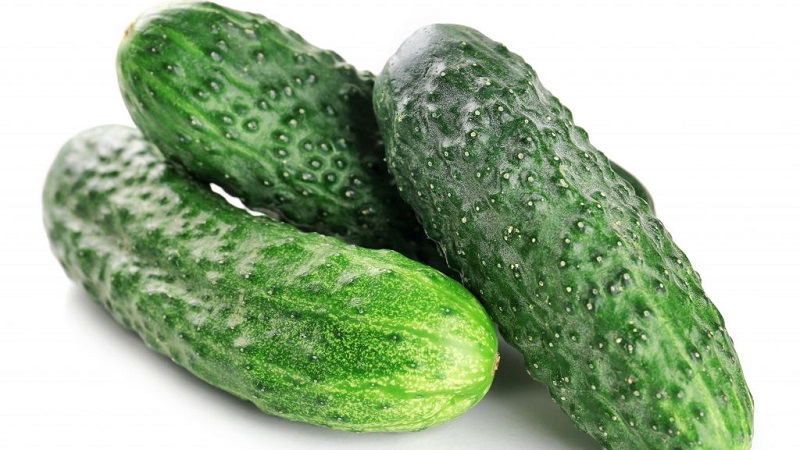
Distinctive features
Cucumber Björn F1 belongs to an indeterminate plant type... it parthenocarpic hybrid, that is, its fruits are tied without pollination. Weather conditions do not affect the development of ovaries. Cucumbers are grown both in the open field and in greenhouse conditions.
Composition of properties, benefits, calorie content
Cucumber has a complex composition and includes many vitamins and minerals important for humans. The vegetable retains its beneficial properties even when salted or canned. 100 g of the product contains only 10-15 kcal, so eating even a kilogram of cucumbers, you will not gain excess weight.
The cucumber contains such vitamins:
- vitamin A;
- vitamin B1;
- vitamin B2 (riboflavin);
- vitamin B3 (pantothenic acid);
- vitamin B6 (pyridoxine);
- vitamin B9 (folic acid);
- vitamin C;
- vitamin E (TE);
- vitamin K (phylloquinone);
- vitamin PP (niacin equivalent);
- beta carotene;
- choline.
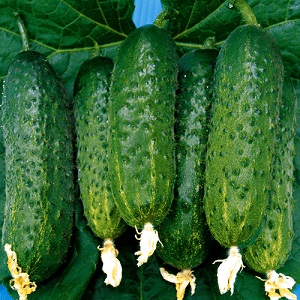 Yet fresh vegetables contain trace elements such as:
Yet fresh vegetables contain trace elements such as:
- magnesium;
- selenium;
- copper;
- phosphorus;
- zinc;
- iron;
- calcium;
- potassium;
- sodium.
Cucumbers are 90-95% structured water. This the product improves the functioning of the digestive system, thyroid gland, acts as a vasoconstrictor and diuretic.
Vegetables contain alkaline salts to help prevent sand and kidney stones... They also contain iodine compounds and fiber, which stimulates the full functioning of the intestines.
On a note. Cucumbers slow down skin aging.
This product considered absolutely dietary... It can be consumed with almost no restrictions. Nutritionists recommend spending a fasting day on cucumbers, during which you can eat up to 1-1.5 kg of vegetables.
Specifications
The culture is not limited in growth, the root system is well developed... The hybrid is characterized by weak climbing. The amount of foliage is average. The hybrid has a female flowering type; barren flowers are absent. Each node contains from two to four ovaries, from which cucumbers are formed.
For your information. The hybrid is not pinned. Also, plants do not require blinding of the lower leaf sinuses.
Throughout the entire period of fruiting, the shape and size of the fruits remain one-dimensional.... Vegetables do not outgrow or turn yellow. Bjorn's type of cucumber is gherkin. Smooth greens have a cylindrical shape. The length of the vegetable is no more than 12 cm.The weight of one fruit is on average 100 g.
 Cucumbers have an attractive appearance. Dark green vegetables have no spots or light streaks... The pulp is firm and crispy. There is no bitterness in vegetables at all.
Cucumbers have an attractive appearance. Dark green vegetables have no spots or light streaks... The pulp is firm and crispy. There is no bitterness in vegetables at all.
Bjorn F1 belongs to one of the earliest cucumbers... The fruits ripen 35-40 days after sowing. The culture bears fruit for 60-70 days. Some growers grow the hybrid in greenhouses twice a season.
Cucumber Bjorn popular for its high yield... When growing vegetables in the open field from 1 sq. m summer residents collect about 13 kg, in greenhouse conditions - 20 kg.
The fruits are versatile in use... Cucumbers are used to prepare fresh salads, winter storage... During transportation, they do not lose their external and taste characteristics.
How to grow this variety yourself
Bjorn F1 cultivated both through seedlings and direct sowing into the ground... Planting with seeds is mainly carried out for growing cucumbers in a greenhouse, seedlings are used if the plants are planted in open ground. To increase yields, the crop is grown in seedlings.
Direct planting of seeds
Seed packaging most often indicates whether their preparation manufacturer. If not, then the seeds are kept for 20-30 minutes in a 1% solution of potassium permanganate, then washed under running water.
Then the seeds are soaked in warm water (+ 35-40 ° C) for 2-3 hours and wrapped in a damp cotton cloth for a couple of days. The gauze is periodically moistened, but so that the seeds do not float in the water. So they will swell and give quick shoots.
Seeds are planted so that the distance between them is at least 35 cm and no more than 60 cm... About 150 cm is left between the rows.The depth of planting of the grains is 3 cm.
Attention! Hybrid producers in most cases disinfect seeds in the factory. This material is covered with a bright shell.
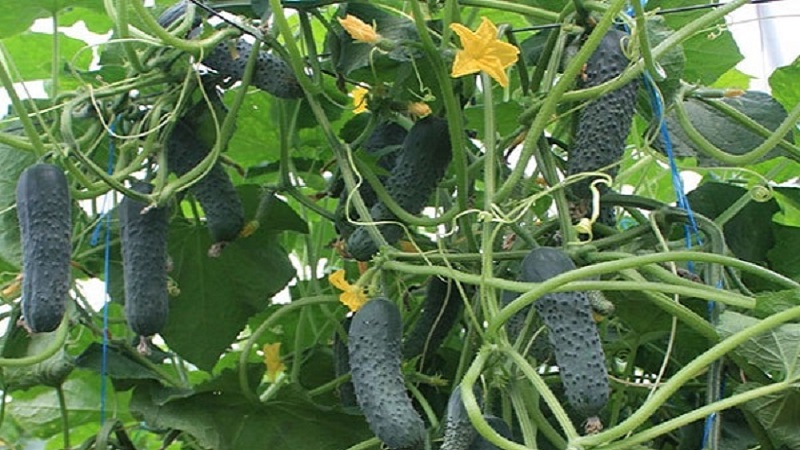
Seedling method
Seeds are planted in peat cups or tablets to a depth of 3-4 cm, moisten and cover with a film to create a greenhouse conditions before emergence. When shoots appear, the film is removed so that the seedlings breathe.
Plants are kept at air temperatures from + 14 ° C to + 20 ° C. On the 20-24th day after sowing, the cucumbers are planted in a permanent place of growth in a greenhouse or open ground. The culture is transplanted together with a peat pot, slightly damaging it for better moisture access to the roots. Peat sours over time and dissolves in the soil.
Seedlings are planted at the same distance as for direct sowing seeds in the ground.
Read also:
Hybrid "Cedric" for growing in greenhouse conditions
How to grow Ekol cucumbers and get an excellent harvest
Why do many summer residents love the Amur cucumber hybrid so much
Growing in stages and care
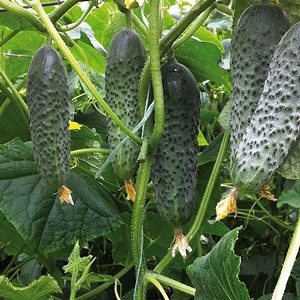 Hybrid Bjorn F1 is undemanding to care for, but it is still necessary to follow simple agrotechnical rules.
Hybrid Bjorn F1 is undemanding to care for, but it is still necessary to follow simple agrotechnical rules.
Over the entire growing season, the culture is fertilized at least four times.... The first feeding is carried out two weeks after planting in a permanent place, the second - at the beginning of flowering, the next - during the ripening of cucumbers.
Mineral and organic fertilizers alternate... Special preparations are used as mineral feed, for example, "Master", "Agricola" or superphosphate. As organic dressings, take an infusion of herbs, chicken droppings or mullein, diluted in a ratio of 1:15. The following dressings are applied to prolong the fruiting period.
Humidification is carried out exclusively with settled water at room temperature in the evening or morning. Watering with cold water leads to root rot. The culture is moistened under the bush, preventing drops from falling on the leaves and stem.
Also 2-3 times per season, loosening the soil around the plants... The event is carried out 12-24 hours after watering. Due to this, oxygen penetrates better to the roots. Together with loosening, weeds are removed, which takes nutrients and moisture from the crop.
In greenhouse conditions, cucumbers are tied to a trellis... Bushes begin to form from the moment about 10 leaves are formed on them. All excess leaves and stepsons are removed. When the plants reach 2 m in height, they are pinched. The correct formation of cucumbers will provide a larger crop.
Important! The culture is tied up carefully so as not to squeeze or restrict the growth of the stem.
Features of cultivation and possible difficulties
Hybrid Björn f1 is grown in open and closed ground, but in greenhouses, yields are increased and care is minimized. The technology of its cultivation practically does not differ from the cultivation of other cucumbers.
Diseases and pests
Cucumber Bjorn has a strong immunity to disease, but the risk of disease remains... In such cases, special preparations are used to protect the bushes from diseases and pests. When using the products, observe the dosage indicated on the package.
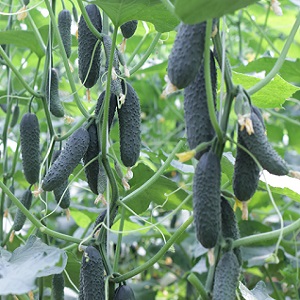 The most common diseases of the cucumber crop:
The most common diseases of the cucumber crop:
- Cladosporium... The disease manifests itself as brown ulcers on bushes and fruits. In order to combat the disease for five days, stop moistening the plants and treat the culture with "Fundazol" (10 g per 10 l of water). The affected areas are removed.
- Powdery mildew... White spots appear on the leaves, which later spread to the entire plant, the leaves dry out, and fruiting stops. The infected parts are cut off, and the bushes themselves are treated with fungicides (10 g per 5 l of water). If the disease has spread to the entire plant, it is removed.
- Downy mildew... The foliage becomes covered with small yellow spots and dries out. Over time, the disease affects the entire plant. For 3-4 days, stop feeding and moisturizing the plants and treat the bushes with "Polycarbacin" (10 g per 5 l of water).
- White rot... A white, viscous consistency covers the bushes and fruits themselves. Infected plant parts are removed and the culture is treated with a prepared solution - 50 g of copper sulfate, urea and zinc sulfate in a bucket of water.
On a note. Diseases are treated in the early stages of development, otherwise the plants will die. There is also a risk of damage to neighboring bushes.
Plants are often attacked by pests... This happens most often during the fruiting period.
The most common pests:
- Aphid... Small green bugs that settle on foliage in whole colonies and eat it, which leads to wilting of the green mass. These insects reproduce very quickly. Pests are destroyed by spraying plants with an ash solution (200 g of ash and 100 g of laundry soap are stirred in 10 liters of water).
- Whitefly... Small midges are white. The pest sucks sap from plants and leaves behind a sooty fungus and wilted leaves. The pest is exterminated by processing the bushes with garlic infusion (200 g of grated garlic or onions are stirred in 10 liters of water and insisted for a day).
- Spider mite... The pest prefers greenhouse conditions and is located on the underside of the leaves, where it leaves its web. The insect spreads infections and eats green matter. The pest is destroyed by spraying the back of the leaves with soapy water (200 g of grated laundry soap in a bucket of water).
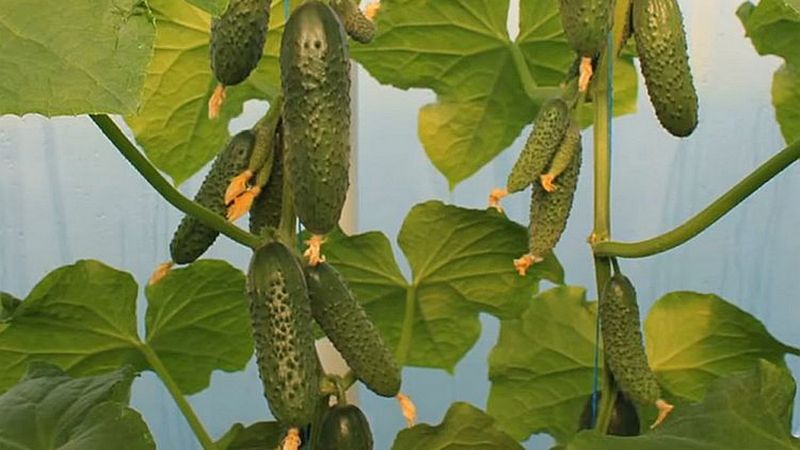
Harvesting and application of the crop
Fruiting cucumber culture stretched... It begins in about 35-40 days. Harvesting is done every two days.
From hybrid cucumbers make delicious summer salads, winter storage and salting.
Advantages and disadvantages of the variety
Advantages of the Bjorn F1 hybrid:
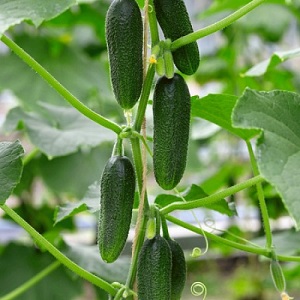 high productivity;
high productivity;- the possibility of growing in open and closed ground, even with small shading;
- early ripening of fruits;
- unpretentious care;
- long-term fruiting and storage of vegetables;
- disease resistance;
- transportability.
There are few disadvantages of the hybrid:
- seeds from ripe fruits are not suitable for further sowing, since this is a hybrid, not a variety;
- exactingness of plants in a garter to a support;
- high cost of seeds.
Björn f1 has more positive qualities than disadvantages, which is why many gardeners prefer this particular hybrid.
Reviews
Summer residents appreciate this hybrid for its long list of benefits.... Cucumbers are actively grown in the vast majority of regions of the country. The opinions of some gardeners - further.
Ruslan, Voronezh: “A neighbor at the dacha advised me to grow cucumbers Bjorn F1. The hybrid was cultivated in seedlings, then planted in a greenhouse. I liked early fruiting. It is not difficult to take care of plants, but it is necessary to feed the crop regularly. The vegetables look beautiful, as in the photo of the package with seeds. Cucumbers as for selection - the size is the same, and I want to put them in winter storage. The vegetables taste sweet, have no bitterness. The pulp is firm and firm, salted well, remains crispy and without voids. Next time I plan to grow this hybrid in a greenhouse in two stages - early spring and early summer ".
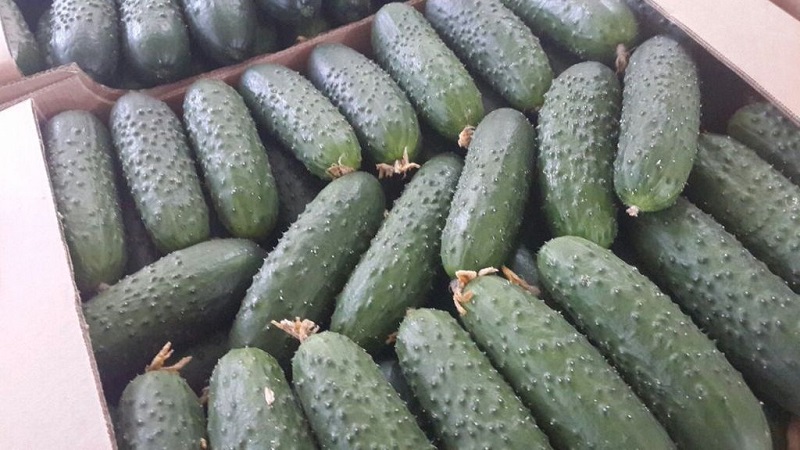
Anna, Rostov: “I tried to grow many different varietal and hybrid cucumbers on my plot until I came across Bjorn F1 in a gardening store. Now I plant only this cucumber for salads and always in a seedling method. Planting and grooming doesn't take a lot of time and effort. The culture bears fruit for a long time. The vegetables are tasty, aromatic, dense and homogeneous inside with small seeds. Suitable for salting and marinade. Even for the winter, I canned salads with the addition of these cucumbers ".
Conclusion
The ultra-early hybrid Björn F1, 35-40 days after sowing, allows you to collect tasty and healthy fruits. During transportation, they do not lose their external and taste characteristics. These vegetables are included in the diet fresh and canned.